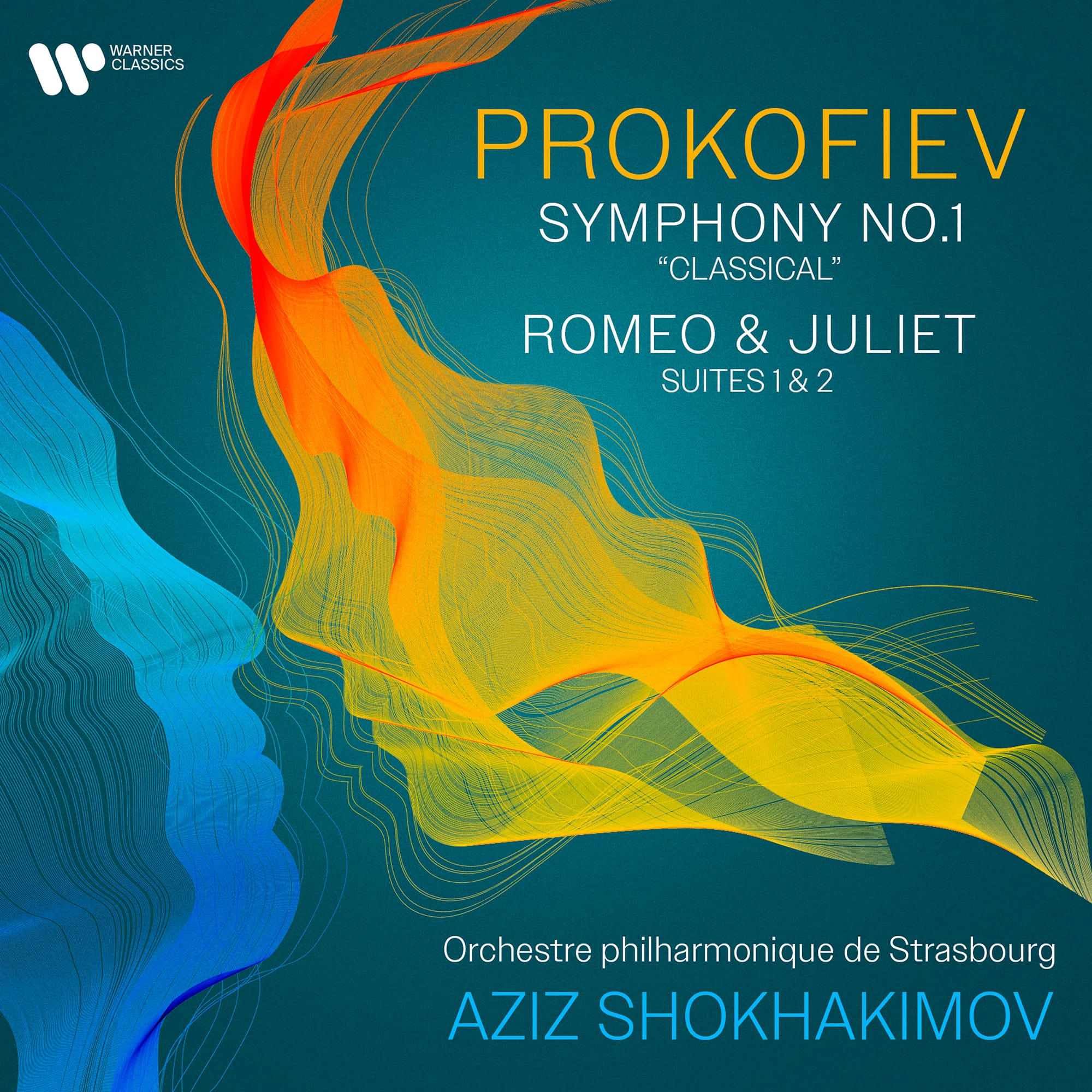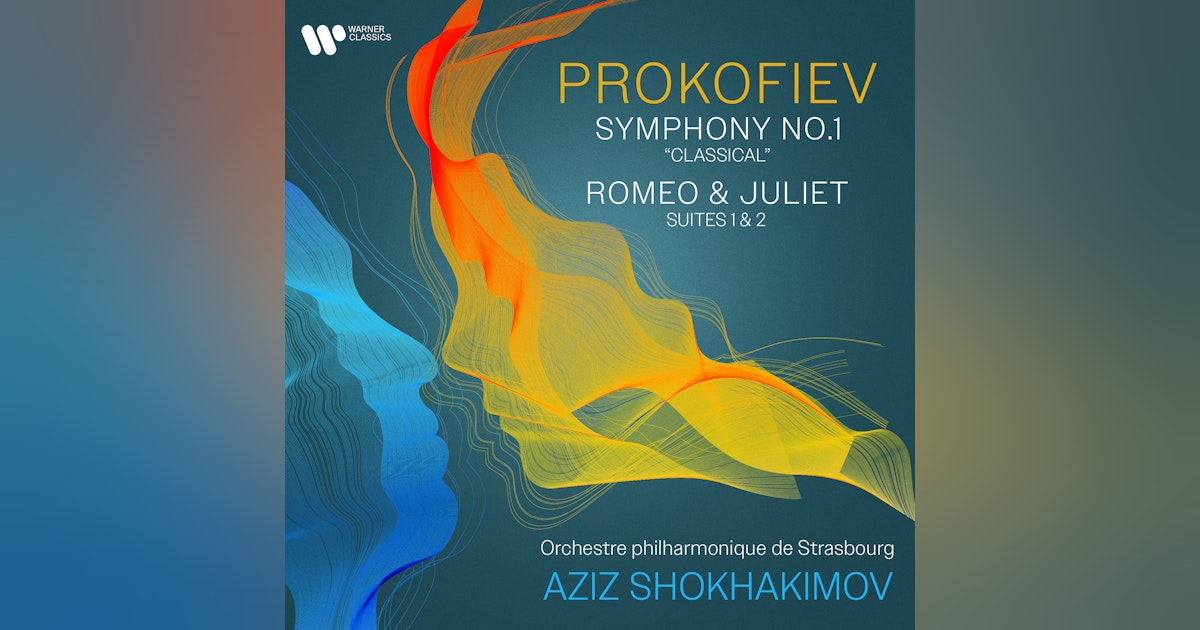
Back in 2022, I reported from a concert in Strasbourg’s Palais de la Musique et des Congrès that included the pieces here, plus on that occasion Shoskakovich’s First Violin Concerto with Simone Lamsma (stepping in for an indisposed Patricia Kopatchinskaja). That was in May of that year; these sessions took place in the October, also in the Strasbourg concert hall. Under Aziz Shokhakimov’s direction, the Orchestre philharmonique de Strasbourg goes from strength to strength.
The review above includes an interview with Shokhsakimov so is worth exploring. The recording contains all of the core strengths of the performance I heard: the discipline, the understanding of Prokofiev’s language, the sense of shared vision that Shokhakimov has fostered with his Strasbourg players. Although Prokofiev’s Haydnesque symphony may seem the easies to grasp of the composer’s tally of Seven, it poses huge challenges to the orchestra. It needs to sound frothy and light in the first movement, and it needs a proper spring in its step. Shokhakmov finds just the right tempo. It is indeed markedly fast, and yet, in keeping with Shokhakimov’s ear for detail, every marking is fastidiously observed, every exude perfect. Not a note is lost, yet the spirit is there. Yes, there was a touch more brio in the live performance, but that’s the nature of live versus recording:
The Intermezzo (Larghetto) seems again perfectly paced. But it is the grace the players find in the music that is so impressive. There is woodwind detail here you rarely hear in other performances:
The third movement is over in the blink of an eye (1″25), a Gavotte hewn, by implication, from a ballet somewhere, its close as why as can be; Shokhakimov zooms along in the finale, balancing the brightness of the first movement:
I for one would be happy with this as my modern version of Prokofiev’s “Classical” Symphony; it sits nicely beside Nikolai Malko’s classic Kingsway Hall account (Philharmonia, 1955). Here’s the first movement of Malko’s performance (Malko’s name is sometimes rendered as “Nicolai Malko,” as in CfP’s cover):
Other Prokofiev Symphonies covered on this site previously include No. 3 (a live performance last year with the LSO under Noseda), No. 5 (BBC NOW / Ryan Bancroft at the 2022 Proms), and No. 6 (Vassly Petrenko and the Oslo Philharmonic, coupled with Myaskovsky No. 27).
… and so to the music from Prokofiev’s ballet, Romeo and Juliet. The other ‘side’ of Prokofiev, his works for the ballet. I was mightily impressed by the June concert in Strasbourg which included the two Suites (review), and we shouldn’t forget Shokhakimov’s resonance also with Rimsky-Korsakov (my review of his performance of Rimsky-Korsakov’s The Tale of Tsar Saltan at L’Opéra du Rhin was printed in Opera Now, November 2023). The opening “Folk Dance” is just as impressive on record as it was live. Listen to the crispness of the rhythms here; and in the second movement of Suite 1, listen to the characterful solos, perhaps especially those of the bassoon:
There is magic in the air for the “Madrigal” while the lesser-known “Menuet (The arrival of the priests)” is just as carefully handled. Here’s the “Madrigal”:
.. while the so-called “balcony scene” is quasi-symphonic in its breadth (mirrored by “Romeo and Juliet before parting” in the Second Suite). Shokhakimov’s achievement is his equal ability to realise the lyrical and the rhythmic, acidic sids of Prokofiev. There is, too, a sense of he monumental here: “The Death of Tybalt”:
Like the First, the Second Suite comprises seven movements. The crushing dissonances of the opening of “The Montagues and Capulets” and their frozen-string “aftershock” hold visceral impact before the more famous par of the movement get under way:
The balletic lightness of “The Young Juliet” is mirrored in the “Dance”. Shokhakimov excels in those rapid, gossamer movements; his characteristic penchant for orchestral discipline pays off supremely at these moments. But I love the slow unfoldings, too: here’s “Romeo and Juliet Before Parting”:
What a trajectory this disc has: from the bright explosion of the opening of the First Symphony to the remarkable, glowing pathos of the final “Romeo at Juliet’s Grave”. All couched in a state-of-the-art recording, this is an unmissable please.
This excellent Warner disc is available at Amazon here; streaming links below.






.png?w=670&resize=670,446&ssl=1)





